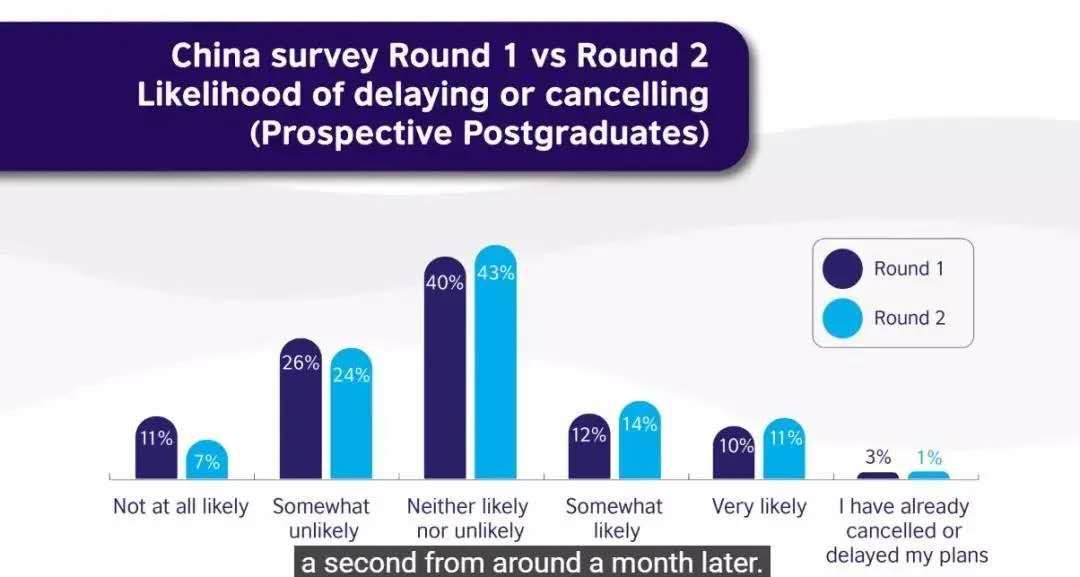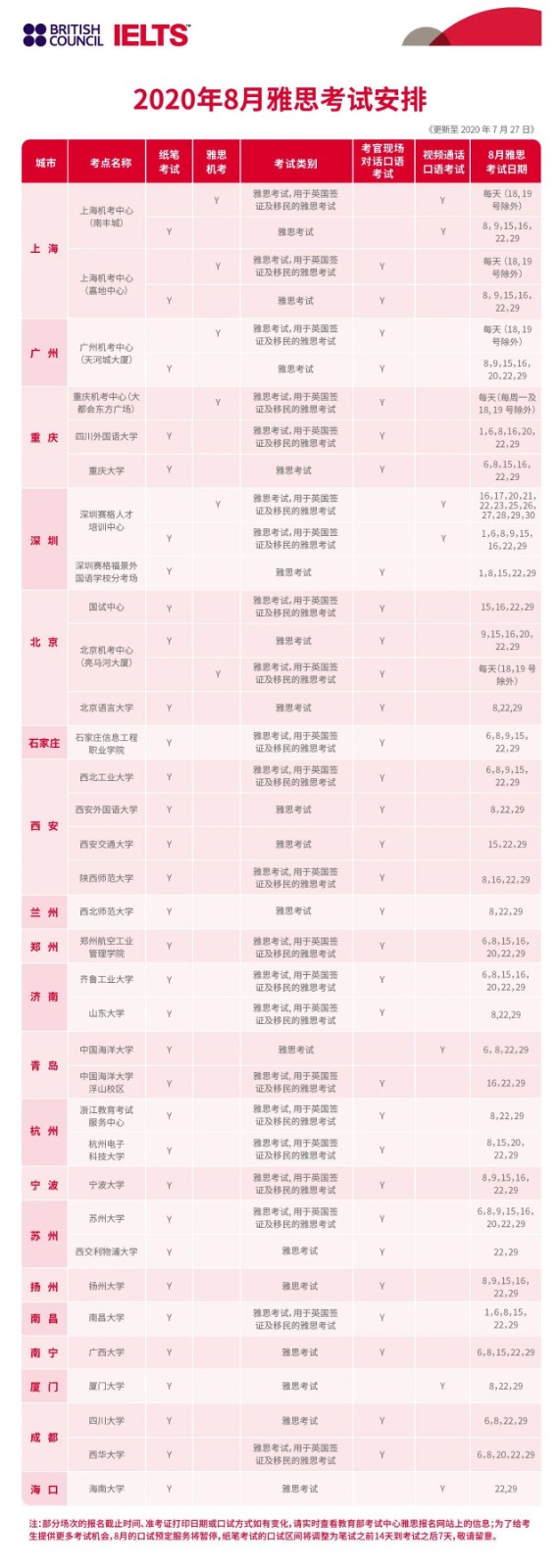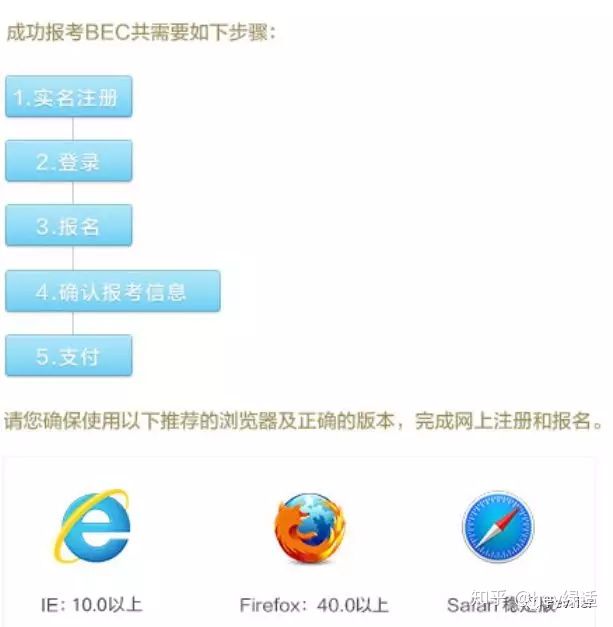托福如何备考得高分?托福107分完胜攻略分享,今天小编给大家带来托福如何备考得高分,希望能够帮助到大家,下面小编就和大家分享,来欣赏一下吧。
托福如何备考得高分?托福107分完胜攻略分享
1.把OG过一遍,了解 TOEFL 的具体考试流程和内容,这个应该2-3天可以完成。然后做一下OG里的题目,这样对T有一个大概的认识,当然OG的难度跟真实考试还是有一定差距,做出来的结果只能给我们YY一下啦。
2.做完蓝Delta的阅读和听力部分,最好是用1-2个礼拜完成。其出题思路与ETS的高相似度就不用说了,难度也不及真题,正好一步步来。每天可以上午做听力,下午做阅读;当然啦具体的可以自己分配,但是最重要的是完成之后一定一定要总结!阅读:每类题型的解题方法都要牢记,把自己易错的题记下来,Delta做完一遍后可以再做一遍,直到不用看那些解题方法就直接可以上手;听力:跟阅读一样,总结自己的易错题型,尽量熟悉考点
Ps: 个人觉得最有效的阅读部分,每类题型都讲的很清楚,之后复习起来可以很有条理。
3.(可选)听写这是最好的练习听力的方法,但也是很辛苦的。所以对于像本人一样控制力不够强的人嘛,只能尽量坚持,实在不行的话就先不做到之后官方真题Official的时候还是可以做听写的。
接下来的1个月复习材料基本就是官方真题Official+机经+各种网上资料。对于1个月满打满算的童鞋可以从官方真题Official1开始做,循序渐进;但要是时间真的不够的话,至少要保证20天的时间全用在复习T上,从官方真题Official14开始做起,难度是接近真题的
1.阅读:可以每2天做一套,做完也是一样作总结,同义词不会的记下来反复看;另外对答案不理解的可以去搜一下官方真题Official解析,这些小站官网上都有下载的,大家可以去下载。
2.听力:每天1套,跟做Delta一样要总结。Conversation注意一下场景特定的词汇,比如图书馆借书,上架,下架等词语,这个比Lecture短很多,可以适当做一下笔记,主要还是在于听懂;Lecture一定要做笔记,其实做题的时候很少会再去看笔记,但是写下来的作用就是帮助自己加深记忆,然后听第二遍,这时候可以做逐句听写,之后再完整听一遍,或者听一遍弄懂做错的地方,最后可以跟着做一遍跟读。总之,不能做完题就结束,一定要每题都弄懂,记住常见考点。
3.口语:要拿高分的话还是不要看我的经验了,呵呵,但是我自己的感受是做好基本的准备分数至少不会不够申请(除了一些特别的牛校)。两种方法:
1.时间多的话可以先做黄金80题,分类写好要点,主要做到每个类型都有话说;然后按历年JJ或者预测JJ做练习,网上有专门的口语软件,我觉得很好用,关键是可以录下来再听,找出自己薄弱的地方,发音、语速、节奏等等然后改善,最后做到看到题目就反应出自己的回答的要点。
2.没时间的话就直接按JJ来,之后的练习跟第一种方法一样,一定要反复练到熟悉,每天都要说。
4.作文:这是最狗血的地方了,考前独立写作自己只是按JJ写了10篇左右,就等着中JJ呢,结果当天考试看到题目就傻了,一道类似G的issue的作文题,当时只知道敲键盘不敢停下啊,想到的基本都写上去了,最后飙到500多字。但是从这次经历还是发现T的独立作文比ISSUE简单多了,只要做到阐明观点,用具体事例支持观点,语言比较通顺,句式稍微有点变化,少拼写错误,这样基本就不会低的。对于例子的选择完全没有什么限定,个人觉得还是用自己或身边的例子最好,这样既可以编一些,又能写的具体,感觉真实;最后就是要限定时间模考写作,起码自己完全写5、6篇,提纲再列5、6篇,同时模考做到有时间检查一遍句子和拼写。综合写作没别的,就是模板,而且是自己总结的模板。
5.最后也是最重要的一件事就是考前一定要模考至少一次,跟正式考试一样,中间休息10分钟,看看自己能不能适应这么长的时间,需不需要中间休息吃一点东西;对于真正考试时候碰到的加试也要考虑进去,要适应做5篇阅读或者做3个section的听力的强度。
其实考试当天感觉并不好,碰到了阅读加试,加试的两篇做得云里雾里(个人猜测:从分数上看来加试貌似是不算分的),到听力的时候人家都已经开始对着麦吼了。。。最后两篇我几乎没怎么听,那时真心想直接走出去回家啊,转念一想这样对不起那死贵的报名费,果断坚持下来了。。。考完还急着报了二战。。。结果还是浪费了1700多块。。。拿到分数真的有种从地狱到天堂的感觉,估计是那时候的坚持给了我动力,那贡献给ETS的1700多块给了我好运~
Ps: 心态很重要!不要盲目相信预测JJ!休息完进入口语之前的试音阶段是不会自动下一步的,要尽量偷听别人的1、2题!即使碰到没有准备过的口语和作文,千万不要慌!说和写有一个共同点:不要停下来卡在那里,要让考官觉得你还有很多想要表达出来!不要盲目自信,更不要盲目自卑!
托福阅读真题原题+题目
Television has transformed politics in the United States by changing the way in which information is disseminated, by altering political campaigns, and by changing citizen's patterns of response to politics. By giving citizens independent access to the candidates, television diminished the role of the political party in the selection of the major party candidates. By centering politics on the person of the candidate, television accelerated the citizen's focus on character rather than issues.
Television has altered the forms of political communication as well. The messages on which most of us rely are briefer than they once were. The stump speech, a political speech given by traveling politicians and lasting 11/2 to 2 hours, which characterized nineteenth-century political discourse, has given way to the 30-second advertisement and the 10 second sound bite in broadcast news. Increasingly the audience for speeches is not that standing in front of the politician but rather the viewing audience who will hear and see a snippet of the speech on the news.
In these abbreviated forms, much of what constituted the traditional political discourse of earlier ages has been lost. In 15 or 30 seconds, a speaker cannot establish the historical context that shaped the issue in question, cannot detail the probable causes of the problem, and cannot examine alternative proposals to argue that one is preferable to others. In snippets, politicians assert but do not argue.
Because television is an intimate medium, speaking through it require a changed political style that was more conversational, personal, and visual than that of the old-style stump speech. Reliance on television means that increasingly our political world contains memorable pictures rather than memorable words. Schools teach us to analyze words and print. However, in a word in which politics is increasingly visual, informed citizenship requires a new set of skills.
Recognizing the power of television's pictures, politicians craft televisual, staged events, called pseudo-event, designed to attract media coverage. Much of the political activity we see on television news has been crafted by politicians, their speechwriters, and their public relations advisers for televised consumption. Sound bites in news and answers to questions in debates increasingly sound like advertisements.
1. What is the main point of the passage ?
(A) Citizens in the United States are now more informed about political issues because of
television coverage.
(B) Citizens in the United States prefer to see politicians on television instead of in person.
(C) Politics in the United States has become substantially more controversial since the
introduction of television.
(D) Politics in the United States has been significantly changed by television.
2. The word disseminated in line 2 is closest in meaning to
(A) analyzed
(B) discussed
(C) spread
(D) stored
3. It can be inferred that before the introduction of television, political parties
(A) had more influence over the selection of political candidates
(B) spent more money to promote their political candidates
(C) attracted more members
(D) received more money
4. The word accelerated in line 5 is closest in meaning to
(A) allowed
(B) increased
(C) required
(D) started
5. The author mentions the stump speech in line 7 as an example of
(A) an event created by politicians to attract media attention
(B) an interactive discussion between two politicians
(C) a kind of political presentation typical of the nineteenth century
(D) a style of speech common to televised political events
6. The phrase given way to in line 10 is closest in meaning to
(A) added interest to
(B) modified
(C) imitated
(D) been replaced by
7. The word that in line 12 refers to
(A) audience
(B) broadcast news
(C) politician
(D) advertisement
8. According to the passage , as compared with televised speeches, traditional political discourse
was more successful at
(A) allowing news coverage of political candidates
(B) placing political issues within a historical context
(C) making politics seem more intimate to citizens
(D) providing detailed information about a candidates private behavior
9. The author states that politicians assert but do not argue (line 18) in order to suggest that
politicians
(A) make claims without providing reasons for the claims
(B) take stronger positions on issues than in the past
(C) enjoy explaining the issue to broadcasters
(D) dislike having to explain their own positions on issues to citizens
10. The word Reliance in line 21 is closest in meaning to
(A) abundance
(B) clarification
(C) dependence
(D) information
11. The purpose of paragraph 4 is to suggest that
(A) politicians will need to learn to become more personal when meeting citizens
(B) politicians who are considered very attractive are favored by citizens over politicians who are
less attractive
(C) citizens tend to favor a politician who analyzed the issue over one who does not
(D) citizens will need to learn how to evaluate visual political images in order to become better
informed
12. According to paragraph 5, staged political events are created so that politicians can
(A) create more time to discuss political issues
(B) obtain more television coverage for themselves
(C) spend more time talking to citizens in person
(D) engages in debates with their opponents
13. Which of the following statements is supported by the passage ?
(A) Political presentations today are more like advertisements than in the past.
(B) Politicians today tend to be more familiar with the views of citizens than in the past.
(C) Citizens today are less informed about a politician's character than in the past.
(D) Political speeches today focus more on details about issues than in the past.
托福阅读真题原题+题目
Fungi, of which there are over 100,000 species, including yeasts and other single-celled organisms as well as the common molds and mushrooms, were formerly classified as members of the plant kingdom. However, in reality they are very different from plants and today they are placed in a separate group altogether. The principal reason for this is that none of them possesses chlorophyll, and since they cannot synthesize their own carbohydrates, they obtain their supplies either from the breakdown of dead organic matter or from other living organisms. Furthermore the walls of fungal cells are not made of cellulose, as those of plants are, but of another complex sugarlike polymer called chitin, the material from which the hard outer skeletons of shrimps, spiders, and insects are made. The difference between the chemical composition of the cell walls of fungi and those of plants is of enormous importance because it enables the tips of the growing hyphae, the threadlike cells of the fungus, to secrete enzymes that break down the walls of plant cells without having any effect on those of the fungus itself. It is these cellulose-destroying enzymes that enable fungi to attack anything made from wood, wood pulp, cotton, flax, or other plant material.
The destructive power of fungi is impressive. They are a major cause of structural damage to building timbers, a cause of disease in animals and humans, and one of the greatest causes of agricultural losses. Entire crops can be wiped out by fungal attacks both before and after harvesting. Some fungi can grow at +50 C, while o°thers can grow at -5 C, so ev°en food in cold storage may not be completely safe from them. On the other hand, fungi bring about the decomposition of dead organic matter, thus enriching the soil and returning carbon dioxide to the atmosphere. They also enter into a number of mutually beneficial relationships with plants and other organisms. In addition, fungi are the source of many of the most potent antibiotics used in clinical medicine, including penicillin.
1. What does paragraph 1 mainly discuss?
(A) differences between simple and complex fungi
(B) functions of chlorophyll in plants
(C) functions of sugar in the walls of fungal cells
(D) differences between fungi and plants
2. Which of the following is mentioned as a major change in how scientists approach the study of fungi?
(A) Fungi are no longer classified as plants
(B) Some single-cell organisms are no longer classified as fungi.
(C) New methods of species identification have been introduced
(D) Theories about the chemical composition of fungi have been revised.
3. The word principal in line 4 is closest in meaning to
(A) true
(B) main
(C) logical
(D) obvious
4. According to the passage , how do fungi obtain carbohydrates?
(A) The absorb carbohydrates from their own cell walls.
(B) They synthesize chlorophyll to produce carbohydrates.
(C) They produce carbohydrates by breaking down chitin.
(D) They acquire carbohydrates from other organic matter, both living and dead.
5. The passage mentions shrimps, spiders, and insects in line 9 because their skeletons
(A) can be destroyed by fungi
(B) have unusual chemical compositions
(C) contain a material found in the walls of fungal cells
(D) secrete the same enzymes as the walls of fungal cells do
6. Which of the following terms is defined in the passage ?
(A) chlorophyll (line 5)
(B) polymer (line 8)
(C) hyphae (line 12)
(D) enzymes (line 14)
7. The word those in line 13 refers to
(A) tips
(B) hyphae
(C) enzymes
(D) walls
8. Fungi have all of the following characteristics EXCEPT
(A) They grow hyphae.
(B) They secrete enzymes.
(C) They synthesize cellulose.
(D) They destroy crops.
9. The word Entire in line 18 is closest in meaning to
(A) certain
(B) whole
(C) mature
(D) diseased
10. The passage describes the negative effects of fungi on all the following EXCEPT
(A) buildings
(B) animals
(C) food
(D) soil
11. The phrase bring about in line 21 is closest in meaning to
(A) cause
(B) join
(C) take
(D) include
12. The passage mentions penicillin in line 25 as an example of
(A) a medicine derived from plants
(B) a beneficial use of fungi
(C) a product of the relationship between plants and fungi
(D) a type of fungi that grows at extreme temperatures.
托福107分完胜攻略分享
的具体考试流程和内。下面小编给大家分享托福107分完胜攻略分享,希望能帮助到大家。 托福107分完胜攻略分享文档下载网址链接:
上一篇:托福高分117经验总结
下一篇:托福112高分是怎样炼成的






